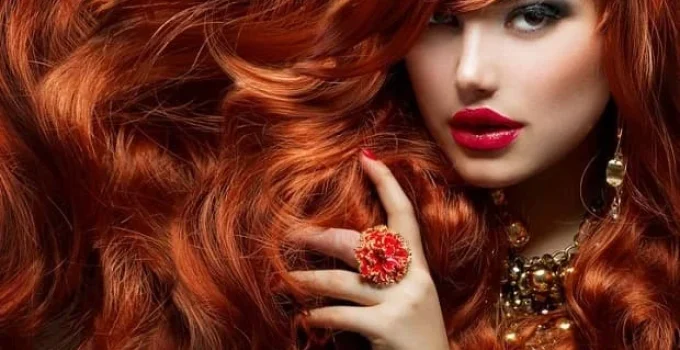What Is the Rarest Hair Color?
The rarest hair color is red with only 1-2% of the population being born with it. While brown, black, and blonde are common across the globe, some hair colors are incredibly rare. Though the rarest natural hair color of all is red, there’s more to the story than just that. Let’s explore what makes some hair colors so unusual from both a genetic and anatomical point of view.
Dive Deeper
- How Is Hair Color Made?
- What’s the Rarest Natural Hair Color?
- How Rare Are Other Hair Colors?
- What About White or Gray Hair?
- Why Do Hair Colors Vary Around the World?
- 🎯 Final Thoughts
- 📚 References
🧬How Is Hair Color Made?
Hair gets its color from melanin, the same pigment that colors your skin and eyes. There are two main types of melanin in hair:
- Eumelanin: Gives hair a black or brown shade
- Pheomelanin: Gives hair a red or yellow tone
The exact mix of these two pigments is decided by your genes. Hair color is passed down from parents to children through DNA. The gene MC1R plays a big role in producing red hair, while other genes affect blondes, brunettes, and black hair.
👩🔬 Cool Fact: Hair has no color when it first grows inside the follicle. Melanocytes add melanin as the hair forms!
🔴What’s the Rarest Natural Hair Color?
The rarest natural hair color in the world is red.
| Hair Color | Percentage of Global Population |
|---|---|
| Red | 1–2% |
| Blonde | 2–3% |
| Gray/White | Varies with age |
| Black | ~75–85% |
| Brown | ~11% |
Only about 1 to 2 out of every 100 people have naturally red hair [1]. Redheads are most commonly found in Scotland, Ireland, and northern Europe. This rare hair color is due to mutations in the MC1R gene, which increases pheomelanin and reduces eumelanin.
📌 Fun Stat: In Scotland, about 13% of people have red hair, the highest percentage in the world [2].
🌍How Rare Are Other Hair Colors?
While red is the rarest, other natural hair colors are also uncommon in some parts of the world:
- Blonde Hair: Occurs in about 2–3% of people, mostly found in Northern Europe.
- Brown Hair: More common in Europe, North America, and some parts of Asia.
- Black Hair: The most common hair color globally, found in most African, Asian, and Indigenous populations.
Natural platinum blonde hair is especially rare and usually seen in children. It often darkens with age.
🌟 Rare but Natural: A few people have a mix of hair colors—like black hair with red streaks—due to gene combinations or genetic mosaicism (when different parts of the body have different DNA).
⚪What About White or Gray Hair?
White or gray hair is not a natural hair color from birth—it’s something that happens over time.
When hair turns gray, it’s because melanocytes stop producing melanin. If no pigment is added to the hair as it grows, the strand comes in white. As more and more of your hair loses pigment, your whole head begins to look gray or silver.
So, while white hair may seem rare, it’s a normal part of aging, not a genetic hair color like red or blonde.
🌐Why Do Hair Colors Vary Around the World?
Hair color is shaped by genetics, evolution, and even sun exposure. In places with lots of sunlight, darker hair and skin offer more protection from UV rays. In cooler, cloudier places, lighter hair evolved because less melanin was needed.
This is why red and blonde hair are mostly found in northern Europe, while dark brown and black hair are common in Africa, Asia, and Latin America.
🗺️ Genetic Evolution: Lighter hair colors are thought to have developed around 11,000 years ago as humans migrated to northern climates [3].
🎯 Final Thoughts
The rarest natural hair color is red, found in only 1–2% of the global population. Blonde hair is also uncommon, while black hair is the most widespread. These differences are all controlled by genetic instructions in your DNA, particularly how much melanin your hair follicles produce.
Hair color isn’t just about looks—it’s a fascinating example of how biology, genetics, and geography shape who we are. Whether your hair is black, brown, red, or gray, it tells a story millions of years in the making.
📚 References
- MedlinePlus Genetics. “MC1R gene.” https://medlineplus.gov/genetics/gene/mc1r/
- The Scotsman. “Scotland has the highest percentage of redheads in the world.” https://www.scotsman.com
- University of Copenhagen. “Ancient DNA reveals origin of blond hair.” https://www.sciencedaily.com/releases/2014/10/141020090551.htm
- Harvard Medical School. “Why Hair Turns Gray.” https://www.health.harvard.edu
- BBC Future. “The world’s rarest hair and eye color combinations.” https://www.bbc.com/future/article/20211020-the-worlds-rarest-hair-and-eye-colour-combinations

